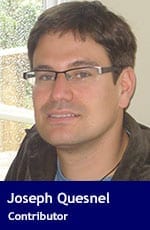 Indigenous communities have so far been spared from the worst of the COVID-19 pandemic.
Indigenous communities have so far been spared from the worst of the COVID-19 pandemic.
So Indigenous communities may provide some insights to other Canadian communities on how to avoid the worst of these outbreaks.
As of June 2, Indigenous Services Canada reported there were 219 confirmed cases of COVID-19 in Indigenous communities across Canada. Official stats show the cases are in Saskatchewan, Alberta, B.C., Ontario and Quebec.
There are 634 recognized First Nations in Canada. The vast majority have not been affected by the pandemic.
That may change but let’s hope not.
According to CTV News, in one case in Alberta, the infections were traced to a nearby meat packing plant. In one Saskatchewan case, two elders died in a care facility.
There are significant risks if outbreaks should occur in First Nation communities.
But some unique circumstances may also protect Indigenous communities from mass outbreaks.
The first is the isolation of many Indigenous communities, with some of these communities accessible only by way of airplanes or winter roads. This isolation may have spared many of these communities from being exposed to people who were themselves exposed.
By and large, the virus is hitting the larger urban centres hardest.
Of course, isolation means a lack of access to proper medical resources to deal with a COVID-19 outbreak. But it seems isolation has shielded these communities.
This only reinforces that these communities be closed off to visitors. That unfortunately includes band members wishing to return to their communities. It seems the early decision to close these communities to outsiders was the right one.
Members who have been off-reserve or travelled overseas, of course, are at greatest risk of exposure. These members must be tested prior to returning to their home reserves.
Also, on many reserves, housing is spaced apart, sometimes significantly. The vast majority of First Nation communities are in rural or semi-rural areas, where there’s significant space to keep away from others, making social distancing an easier thing to do.
However, crowded housing on some First Nations is a perfect recipe for spreading infectious diseases. We’ve seen that in the past with tuberculosis, among other things.
Philip Salzman talks of of “dangerous density” in relation to the COVID-19 outbreak, and indeed all outbreaks. Looking at data from the United States, he notes that states with heavily rural and low-density populations have the lowest number of COVID-19 infections. States with large, dense urban regions are hardest hit.
This has largely been the case in Canada and other countries. Salzman questions whether this should make urban planners rethink our city living.
Do isolated First Nations – minus the obvious problem of overcrowded and substandard housing – offer insight to mainstream Canada on how to better minimize the risks of spreading deadly infectious diseases like COVID-19?
The resilience of remote First Nations in the face of these outbreaks may encourage changes in how we plan and manage our living spaces. Perhaps the orientation towards higher density, high-rise urban centres should change.
We should continue to watch First Nations closely to see if the outbreak worsens. Thankfully, until now, it seems these communities have been shielded from exposure. With the right policy decisions, this will likely remain the case.
Joseph Quesnel is a research associate with the Frontier Centre for Public Policy.
The views, opinions and positions expressed by columnists and contributors are the author’s alone. They do not inherently or expressly reflect the views, opinions and/or positions of our publication.


